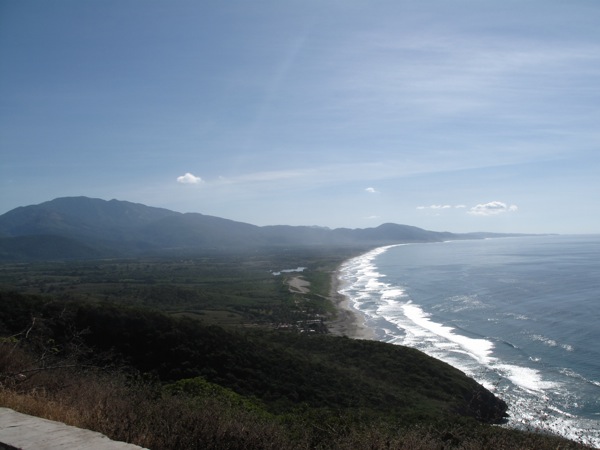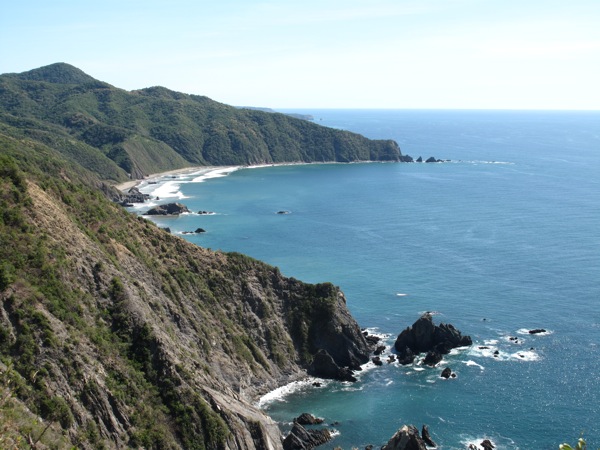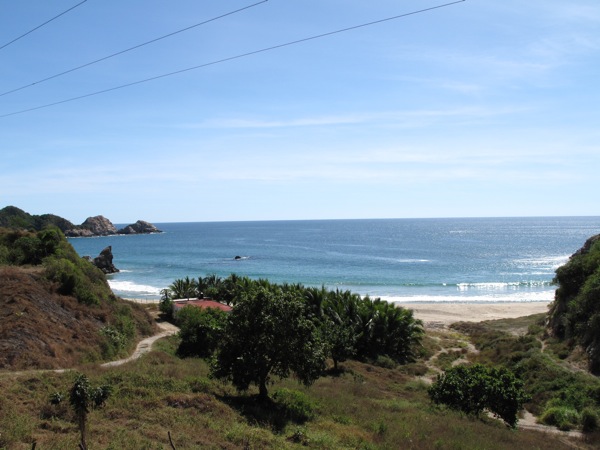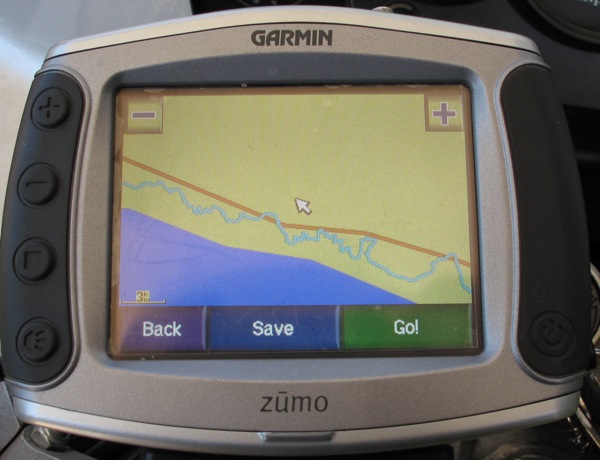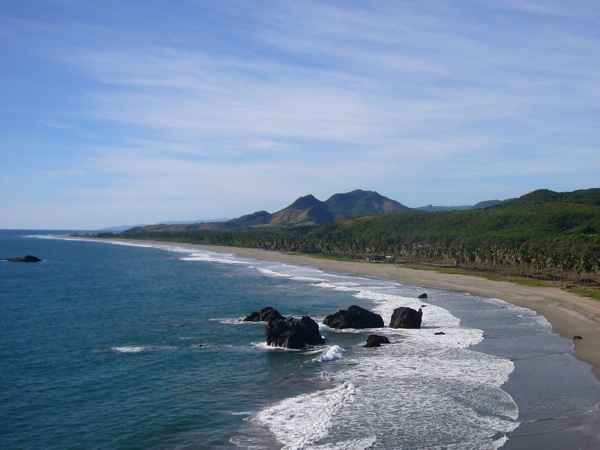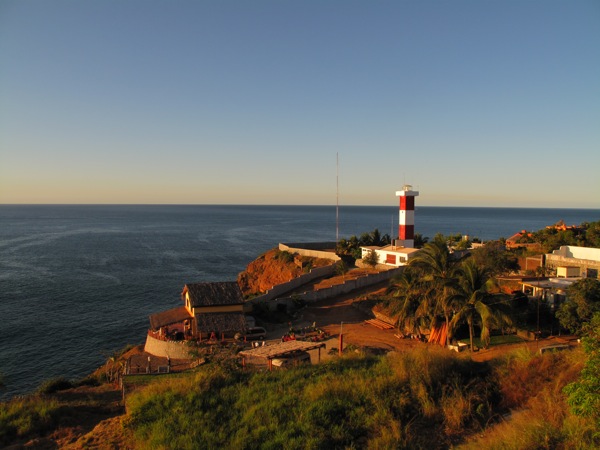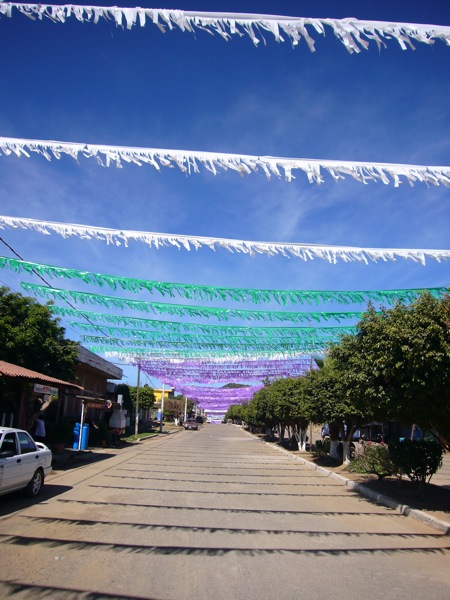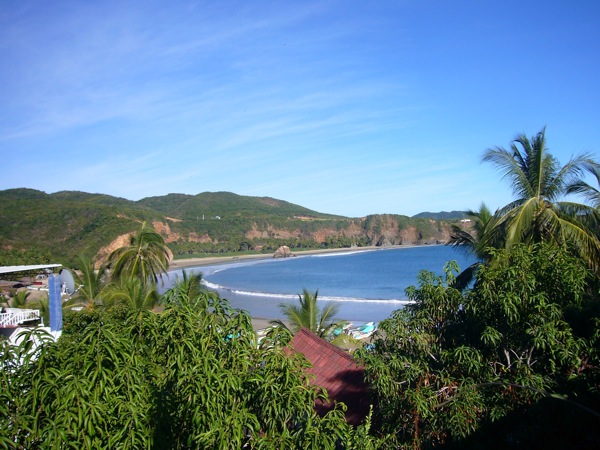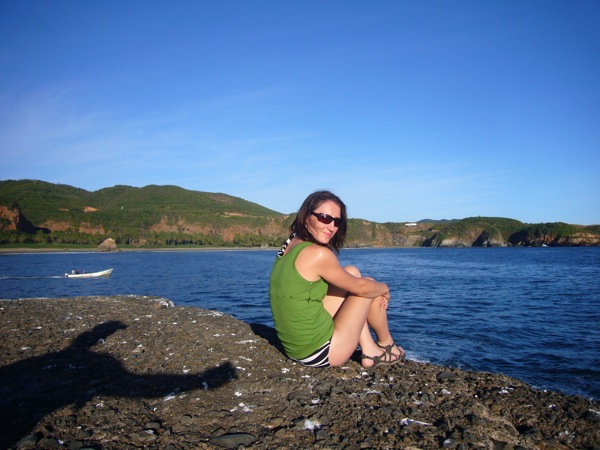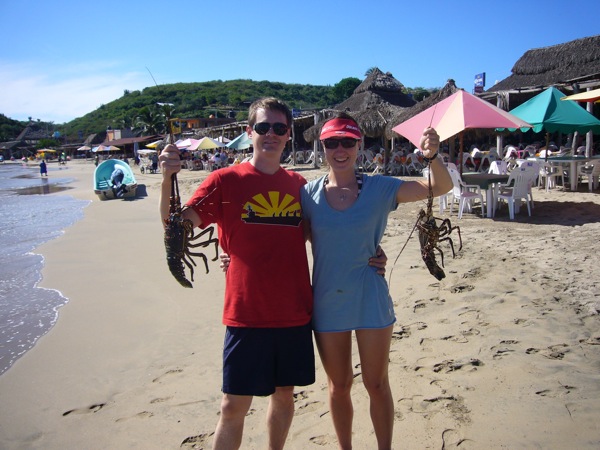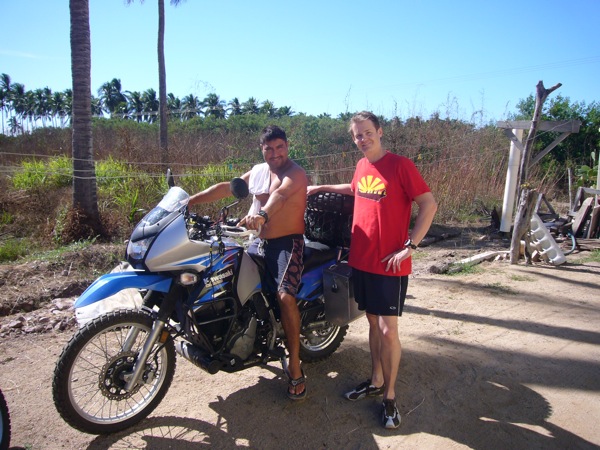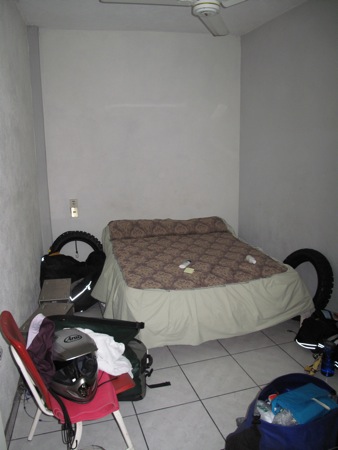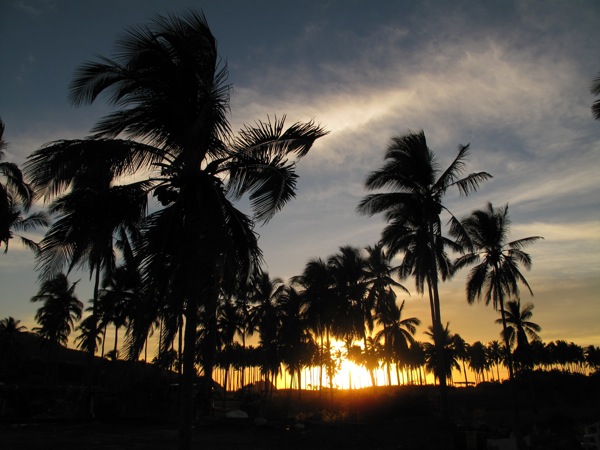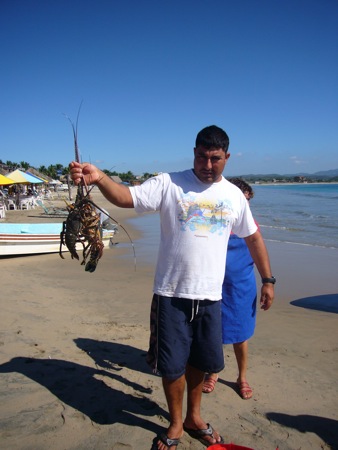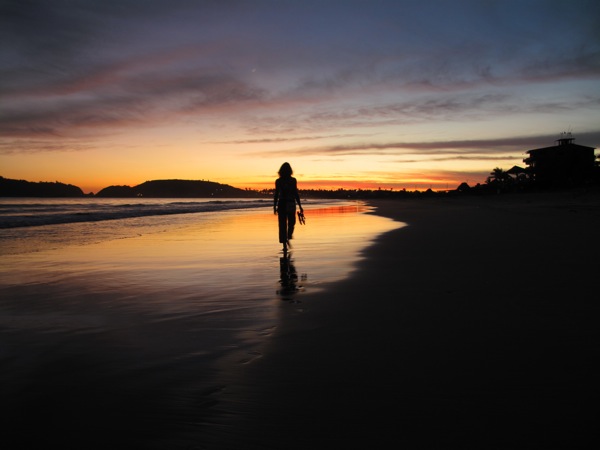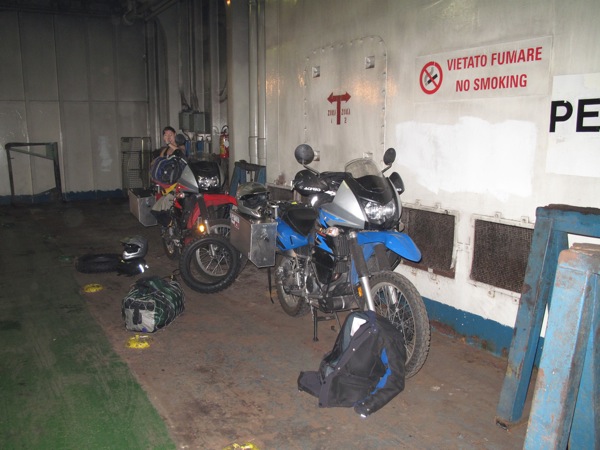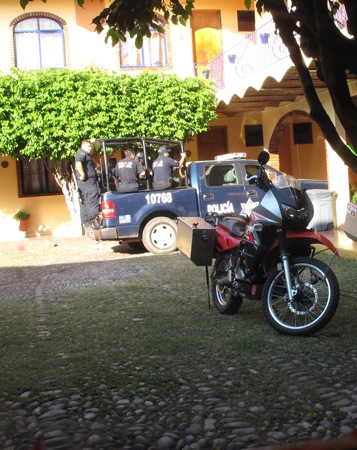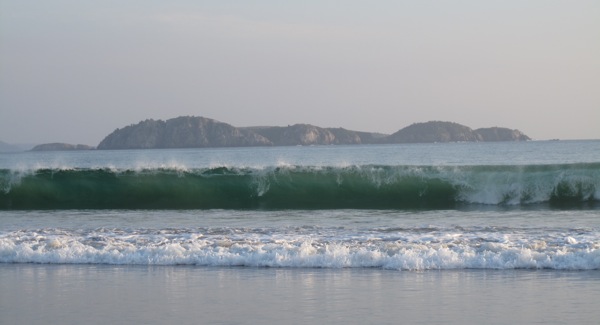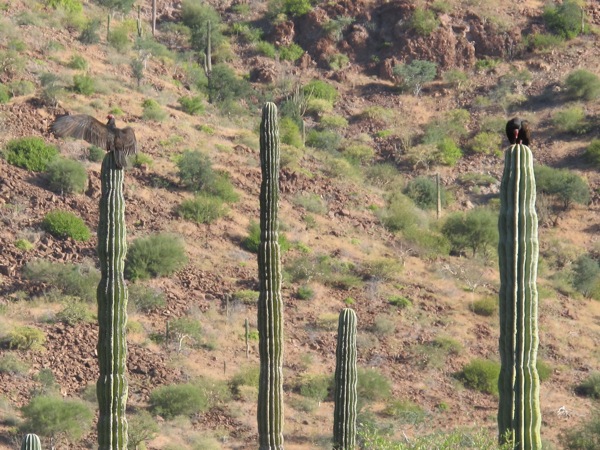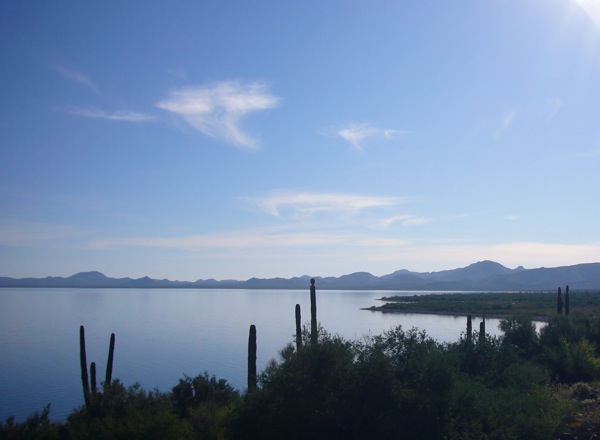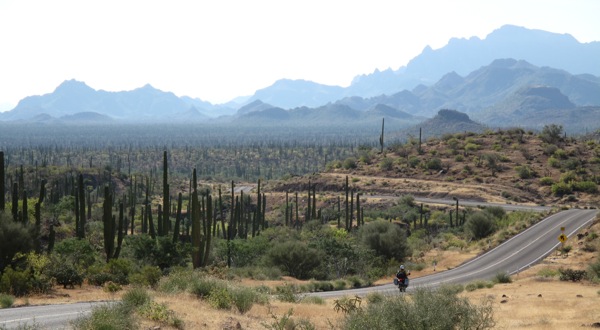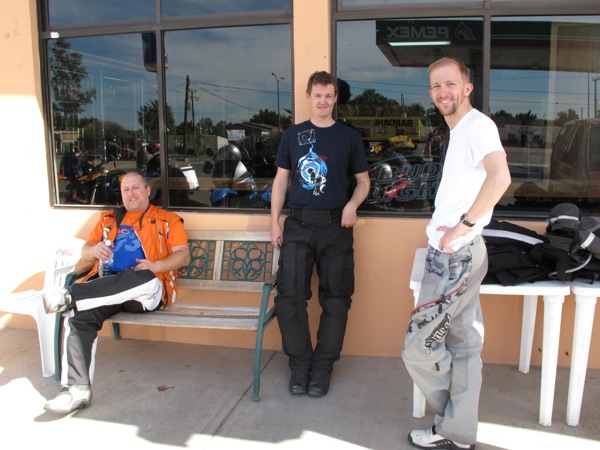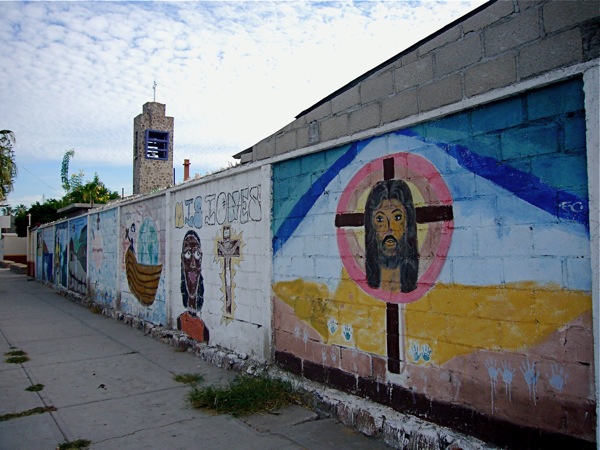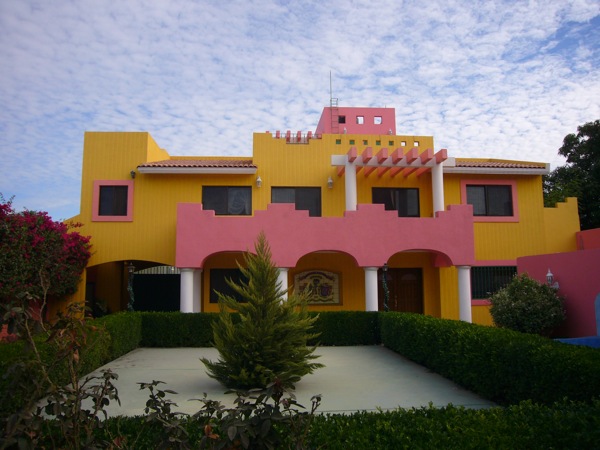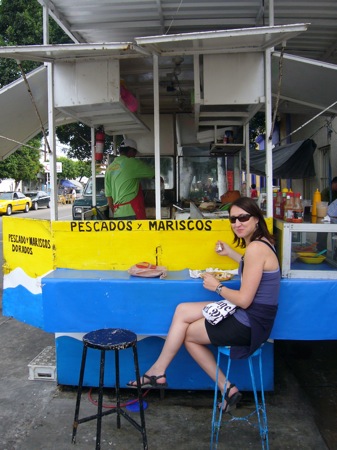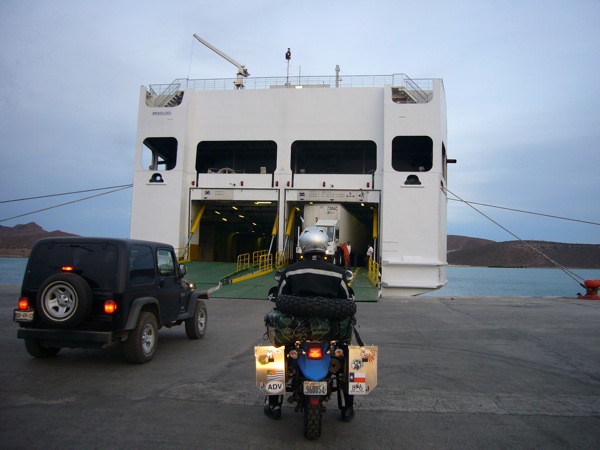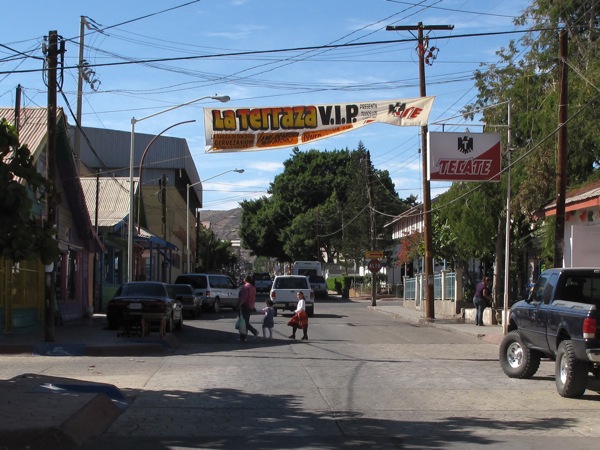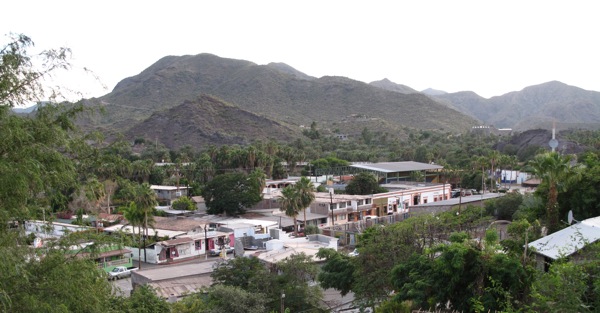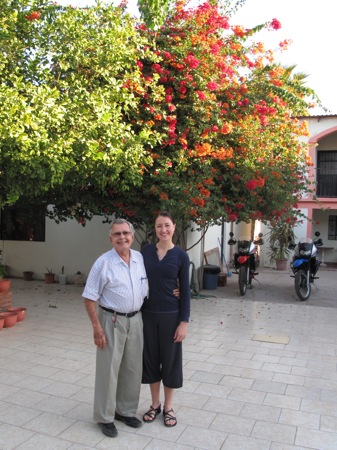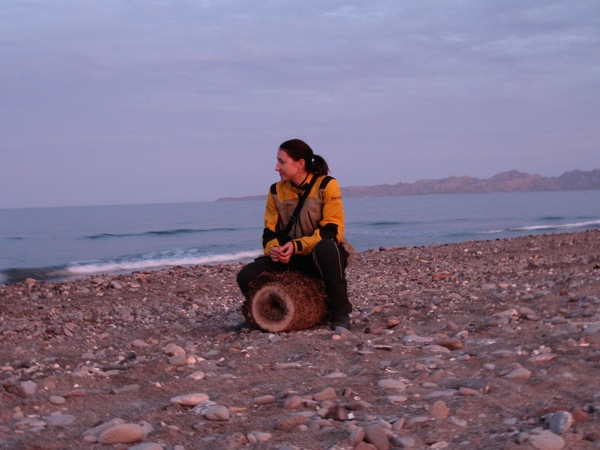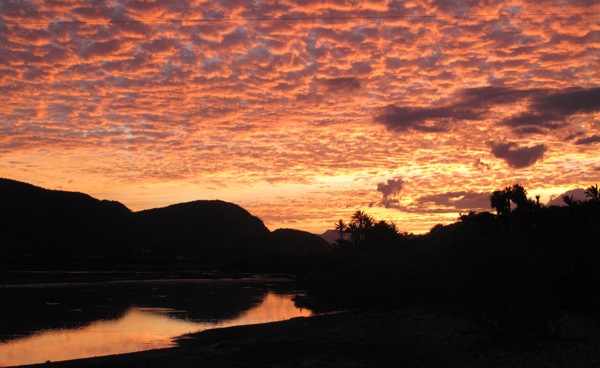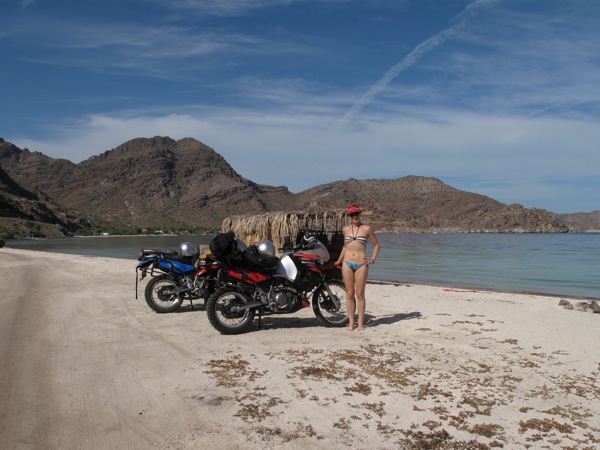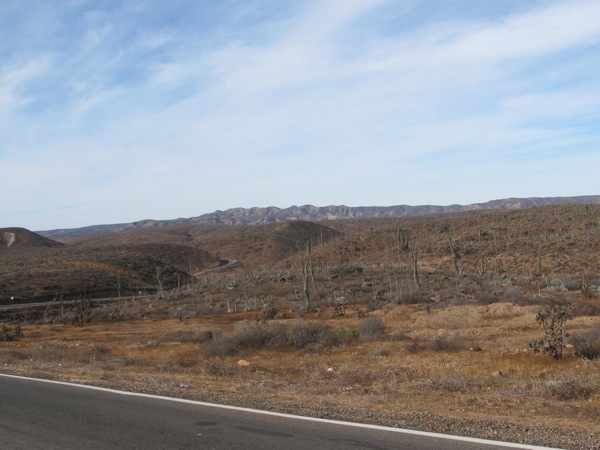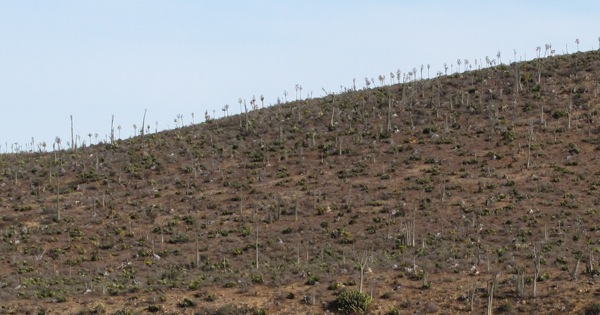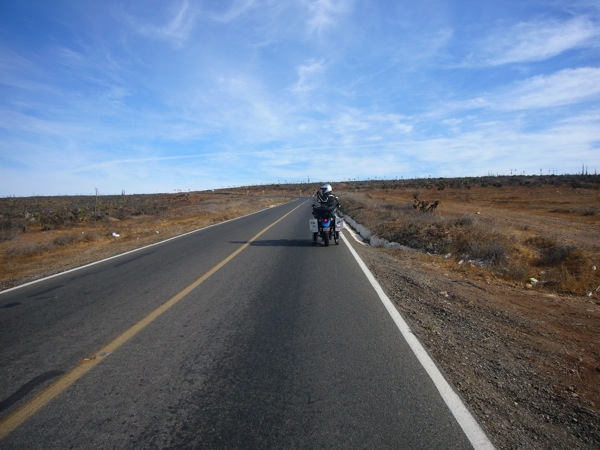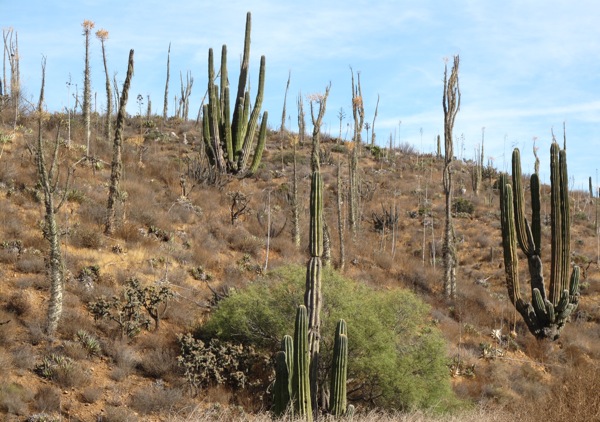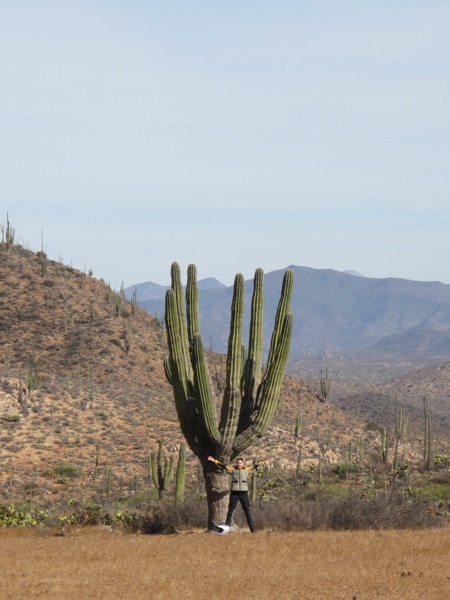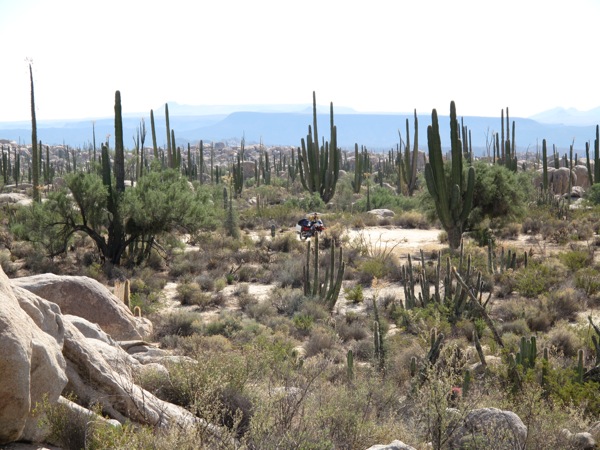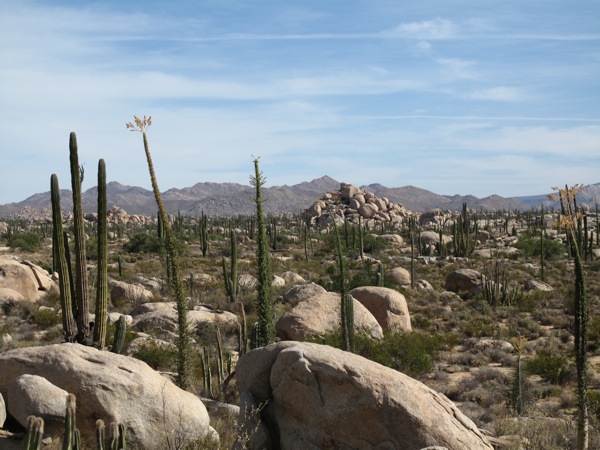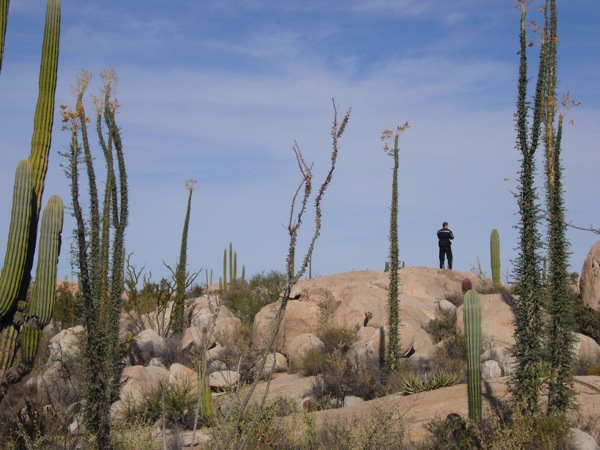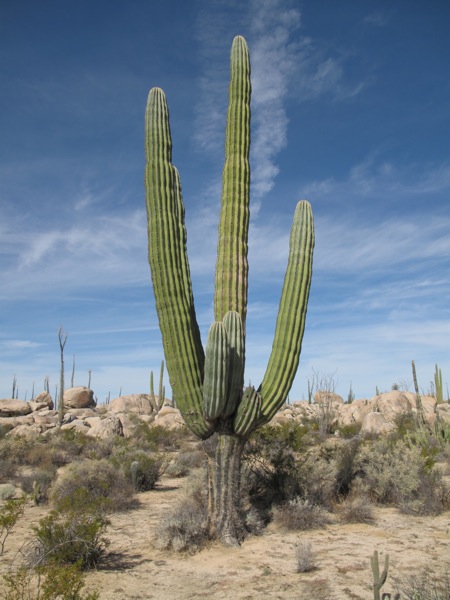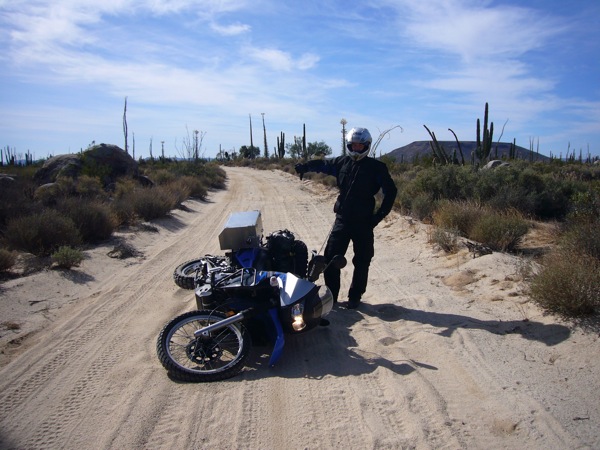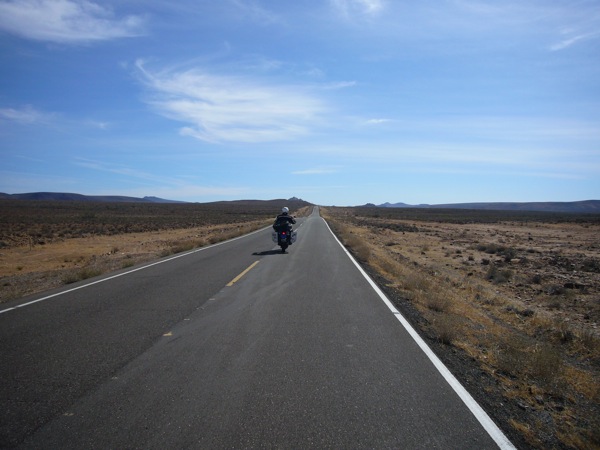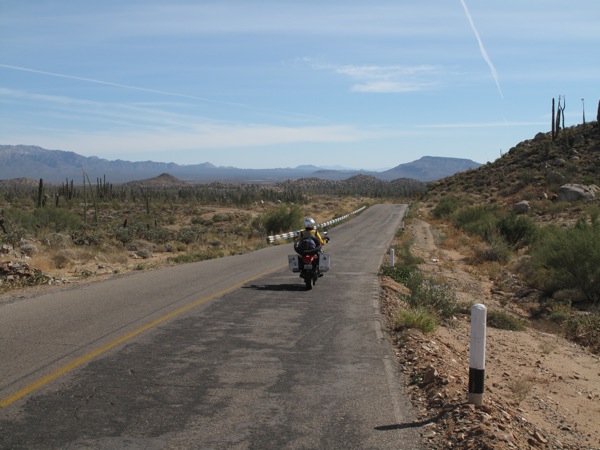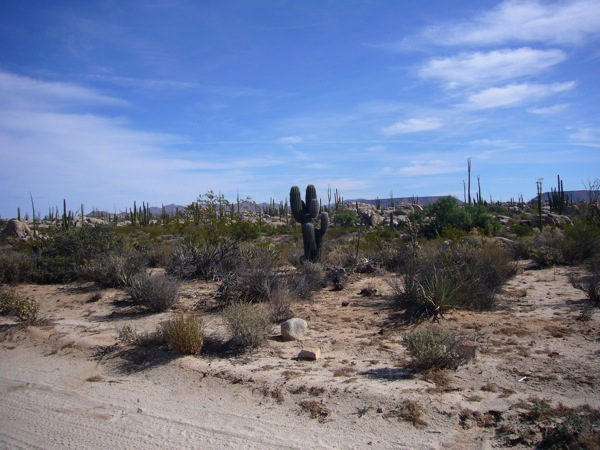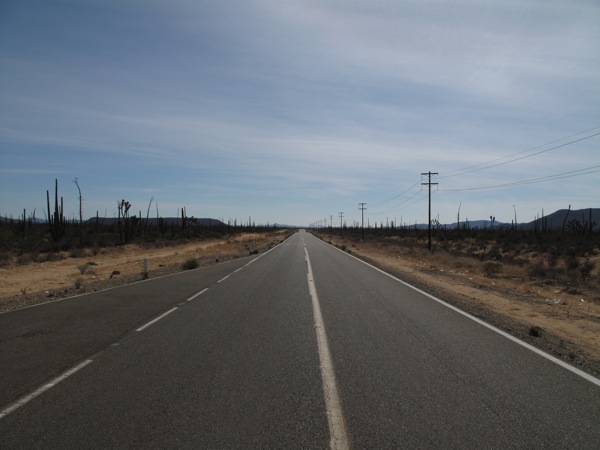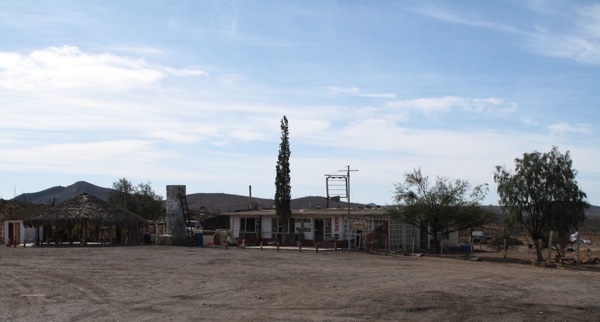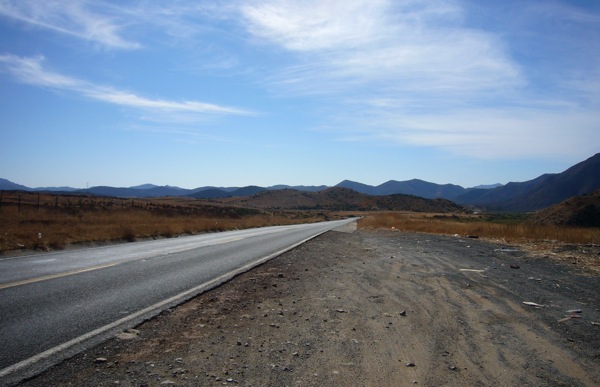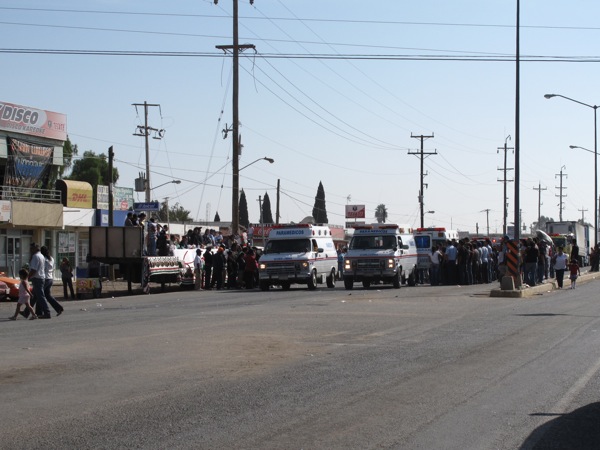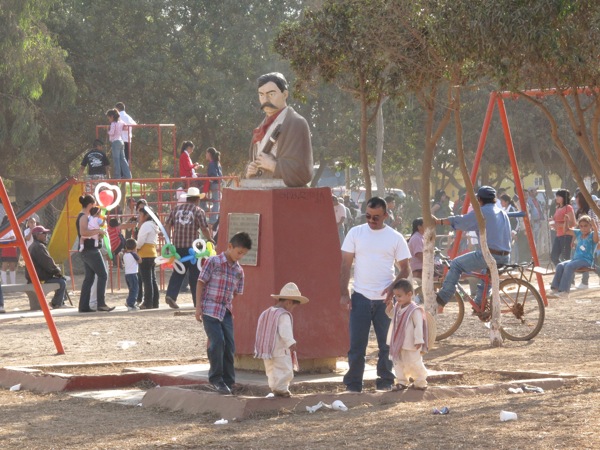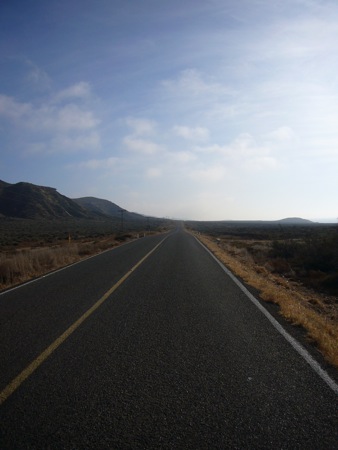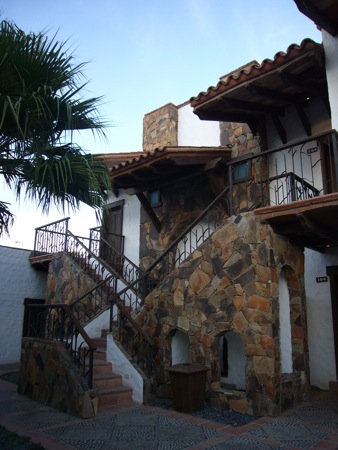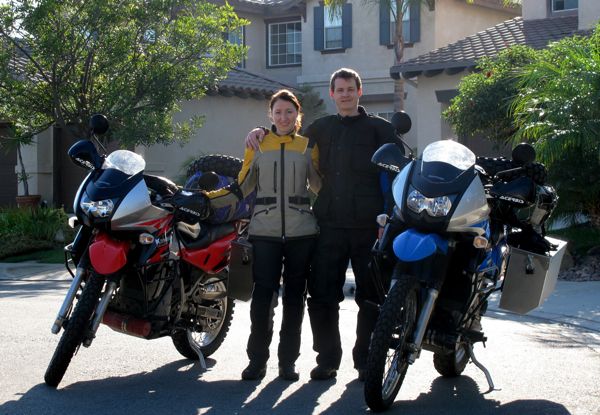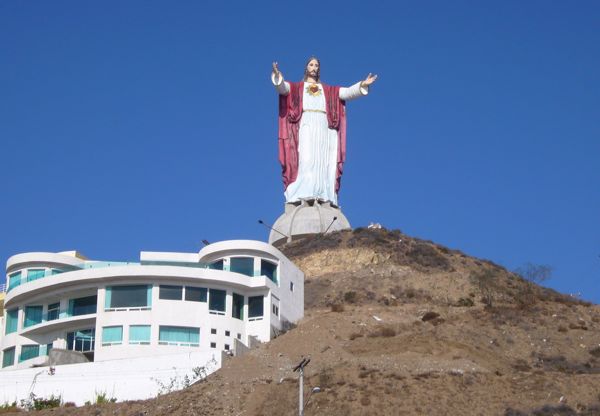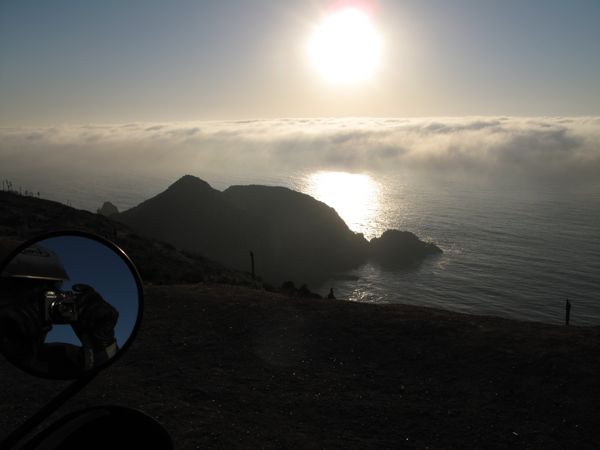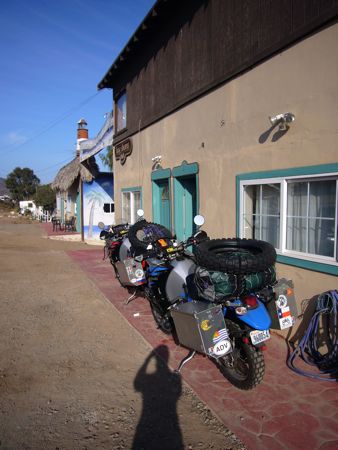Wednesday November 26 to Friday, November 28
The ferry ride from Baja to Mazatlan was uneventful. We had splurged on a cabin, with the hopes that we could get a good night’s sleep and use that to power us away from the tourist trap of Mazatlan as rapidly as possible. The cabin was surprisingly plush, with nice beds and a bathroom with a shower. In fact, I was surprised at how nice the passenger area of the ship was in general. It felt more like a cruise ship than a ferry. The Puget Sound ferry system, while nice enough, had lowered my expectations when I thought of a ferry.
The ferry plodded across the sea at a stately 31 km/h, according to the GPS. If I had known the distance to be traveled, I would have released before I set my alarm clock that there was no way the ferry was going to arrive at the scheduled 8 AM. I’m sure the crew knew that, but they feigned ignorance when I had asked them. Very kind of them to wake us up and announce over the PA at 6:30AM that the restaurants and cafeteria were open. We got up about an hour later, packed up our things, laid out the riding gear, and went to get some coffee. If I had known the ferry wasn’t going to arrive until 11AM I would have slept until much later. I’m a big fan of sleeping.
We debarked with little drama, and drove through the lovely industrial sector of Mazatlan. The heat was about the same as Baja but the humidity was stifling. Compared to Baja, it felt like we were wearing lead blankets fresh out of the oven. Poor Inna really seems to be struggling with heat in her legs. Her boots seem to retain more heat than mine, and we can’t tell if it’s the BMW Santiago pants or some aspect of the KLR plumbing dumping heat onto her knees. Slow speeds are really hard on her.
It took us a few beats to find access to the freeway south. At this point we were still planning on taking 40 up to Durango to see Zacatecas and the interior colonial towns. This had been an agonizing decision, as sun starved Seattlites the pull of remote beaches along the coast was strong. Navigation wasn’t helped by the Garmin basemap being just completely wrong. It showed 40 to be north of Mazatlan while the paper map showed it to the south. I had already seen how worthless the basemap was, but I didn’t expect it to be so grossly incorrect. We headed south and after some hesitation we started up 40.
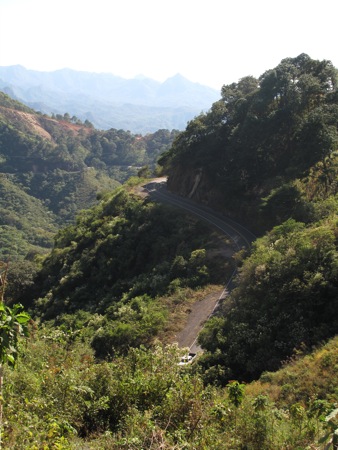
I can’t emphasize enough what a great motorcycle road 40 is. It starts out with gentle curves, but once you reach the proper foothills of the Sierra Madres, it turns into a roller coaster. It was curve after curve after curve. Rarely could I count to 3 on a straight before another curve started. I tried counting for one mile and counted 17 turns. While I was enjoying the ride, looming over our heads were the distance and the clock. We have a set rule of not riding after dark, and the late arrival of the ferry had really cost us prime riding hours. I think it was around 40 miles up the road, with 3 hours of light and 160 miles left, that we accepted defeat and headed back down.
It was heartbreaking to give up on such an awesome road, but safety always comes first for us. The thought of lying on a beach the next day also greatly eased the pain. We headed down and the road felt much more dangerous. The majority of the big trucks were headed up the mountain, and they had little regard for those pesky strips cluttering up the road. They were easy enough to avoid, but it made us appreciate the decision not to do so many more miles so late in the day.
We headed back south and decided to spend the money and use the cuesta (expensive) toll roads to make up for all of the lost time that day. They’re great roads and we can cruise at our max KLR speed of 70, but it’s ridiculous how expensive they are. We spent as much on the toll road as a hotel. We rode and as dusk began to settle, we exited to the town of Acaponeta.
We rode into town, checked a few hotels, and the only hotel with suitable parking was on the road into town. We weren’t sure if it was a hotel at first or a police station. There were armed guards out front, and the central courtyard was full of Federale vehicles and men. Inna asked the men out front if it really was a hotel and they gave the affirmative. We parked in front of our room and for one night, had little fear about bike security. There must have been some sort of jefé staying there to require so many guards.
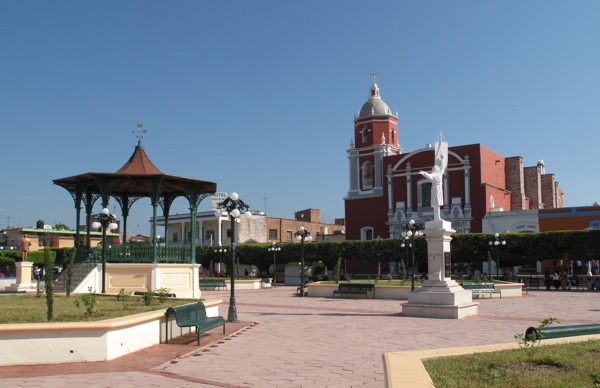
Acaponeta is a charming town. The central plaza, while under construction like everything else in Mexico, is a beautiful wide open space with a few statues and a central gazebo. Restaurants and shops surrounded the plaza, and it was bustling with activity. This was the first town we’d stayed in Mexico that really felt warm. The town seemed to be a thriving community and the central plaza with filled with children and adults socializing. Everyone seemed to be out for a stroll. We had our dinner at a restaurant on the plaza and unexpectedly had perhaps the best guacamole we’ve ever had.
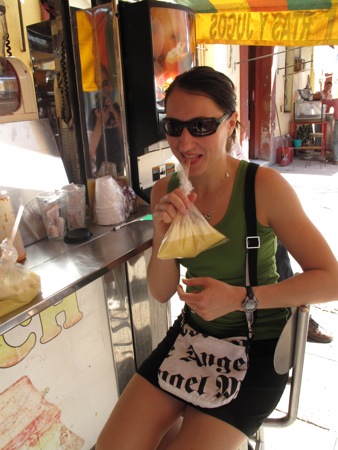
It was great to sleep in a bed that didn’t rock with the ocean that night, and we overindulged the next morning. It was a slow start. We went into the center of town, and ended up in the central market. It really turns my head to see a pickup truck with two huge bulls in the back drive by. Welcome to the mainland. We had some juices made up, which they served to us in plastic bags with a straw poking out. Very clever.
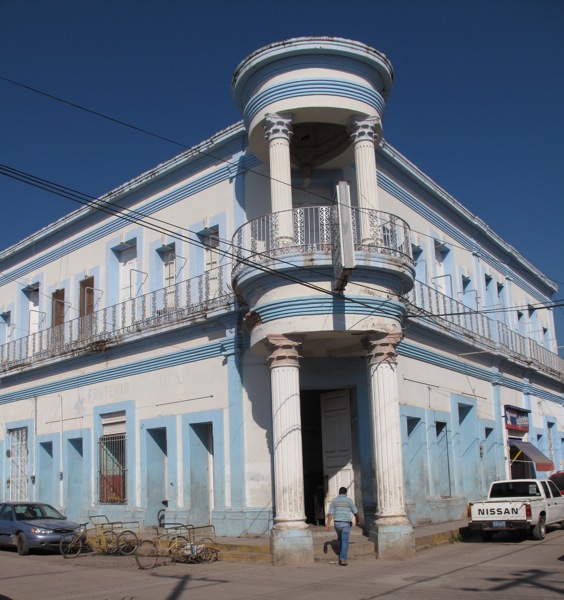
By the time we were back on the road, the heat was in full force. We put riding gear on only at the last possible second before starting the motor. We blasted south on the cuesta road again, but soon exited because the expense was just too great ($15 for two bikes every 40 miles!). We took Hwy 15 down to Tepic, then headed to the coast on Hwy 200. The road south of Tepic was beautiful. The countryside was filled with farmland nestled between large, verdant hills. We could see rain to the east ahead of us, but the road always seemed to turn away from it at the last moment, so we dodged having to dig out of rain gear.
The road turned from rolling hills to farmland, and traffic became a bigger problem. The lines behind trucks became 7-8 cars deep, and passing became much more time consuming. This, combined with the heat, led to more than a little frustration. Somewhere during the day we had let the ‘hurry’ bug infect us, and we stressed about making miles rather than enjoying the scenery while we were going slow. We need to stop falling into that mental trap.
We rode through Puerta Vallarta and it didn’t make much of an impression on us other than terrible traffic. The beaches look great, the crowds not so much. I would rate it much higher than Cancun though. Once past there, the trucks seemed to disappear and we were riding at a more pleasant pace. By the time it was getting dark, we were near Tomatlán, so we headed 5 miles east to rest for the night. We were so close to where we wanted to be it hurt to stop.
Tomatlán is a nice enough town. We made up for our toll roads by having $5 worth of tacos for dinner and stayed at the cheapest hotel we’d yet stayed at. It was 170 pesos (US$12) and had a very secure courtyard for the bikes. The quality of the room was in line with the price. It was warmer in the room than outside, so we just left the door open until we turned the lights out. The sink, shower, and toilet were all in one stall. If you were a guy, you could probably manage to use them all at once. The room overlooked a popular road in town, so we had noise late into the night.
I have to mention something I found hysterical. I’m used to people in the US rolling down the street with cars pumping bass, either to dance music or hip hop. We heard some cars approaching us while we ate our tacos and could feel the heavy bass in typical fashion. It wasn’t until they were close enough to hear the treble that we could hear they were somehow extracting all of that bass from traditional Mexican crooning ballads. It was an excellent twist against my expectations.
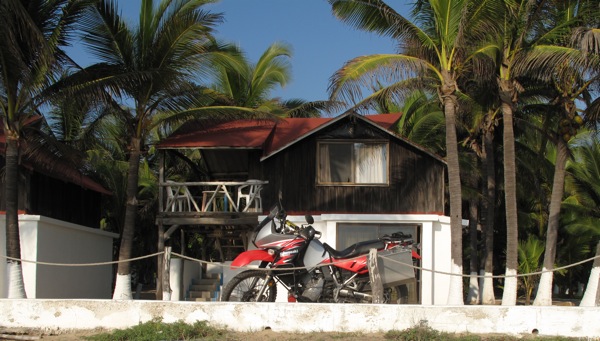
We slept poorly that night. The church bells ring at 6:30 to wake up everyone up, which is very quaint as long as you don’t live there and prefer not to get up at 6:30 every day. We rose to make our early start for a tiny run down the coast. We had three beach towns we were going to check out within 50 miles, so we hoped to settle on one quickly and hit the beach. We came across Punta Perula first, and rode down the dirt road to it, only to cross a paved road along the coast. Where did that road come from ?? We rode to the beach, and it was beautiful. Quiet with a great surf break in a small bay sheltering some green islands.
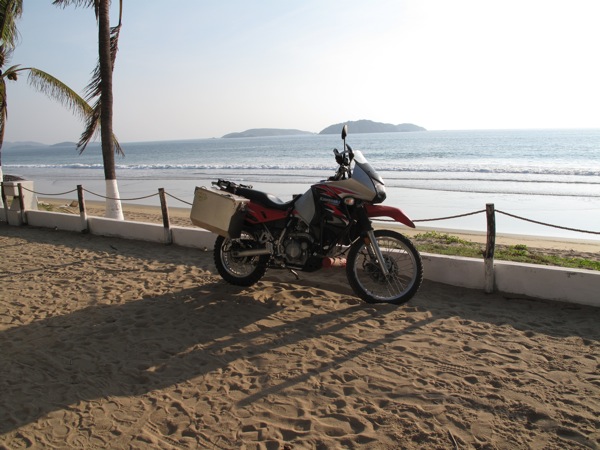
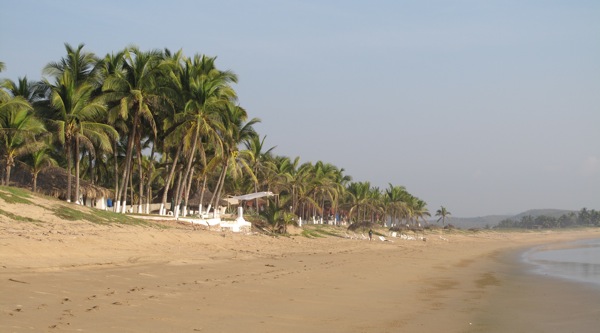
Our next stop was Chamela, which turned out to be quite challenging. The signs point down dirt roads that don’t go anywhere. We kept ending up in people’s back yards. We gave up on finding Playa Chamela and headed back to Punta Perula. We noticed one more dirt road sign with a hotel indicator and gave it a shot. At the end there were a hotel featuring beachfront bungalows right on the beach. Although it was a bit budget busting, we splurged and decided to stay for the night. Neither of us has ever had a room so close to the ocean before. It was a gorgeous sunny day and the water that perfect warm but refreshing temperature.
